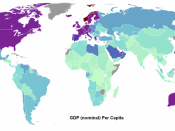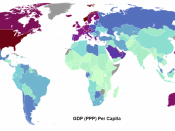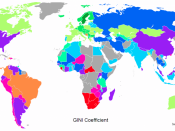Sweden is located on the Scandinavian Peninsula, bordering the Baltic Sea in Northern Europe, having a total land mass of 450,000kmò making it the third largest country in the European Union. In 2008, the population was over 9.2 million.
Map of Sweden:Sweden is a constitutional monarchy, with a highly developed and open economy and a parliamentary system of government.
Sweden's currency is the krona (SEK) and currently trades around 0.125105 $US. (Values from 26/3/2009, but varies constantly)Sweden's main industries include:motor vehiclesforestrytelecommunicationsSweden's main resources are:timberhydropoweriron oreSweden's total tax revenue was 47.8% of GDP in 2007, which was the second highest after Denmark.
Sweden is classified as an advanced mixed market economy. Most economic decisions are made by the private sector, but government intervention still exists. Up until 2008, Sweden's economy has been growing rapidly since the recession in the early 1990's. Characteristics that Sweden shares with other advanced market economy include:High IndustrialisationSkilled Labour ForceHigh Standard of LivingHigh per capita IncomesHigh level of Human DevelopmentHigh levels of Saving and InvestmentWidespread access to Health, Education and Social Welfare ServicesThe country's major trading partners include:GermanyUSANorwayUKDenmarkFinlandFranceNetherlandsBelgiumEconomic IndicatorsEconomic GrowthSweden has had consistent growths of 3-5% in their GDP (gross domestic product) in the past few years, but the recent economic crisis has caused Sweden's economic growth to stagnate.
Seasonally adjusted data showed that Sweden's GDP contracted by 0.1% in the second and third quarter, placing it in a recession. In the last quarter of 2008 Sweden recorded another consecutive quarter of negative growth with quarter-to-quarter GDP falling by 2.4%. The recession is predicted to continue into 2009, with the economy predicted to recover early 2010.
Internal StabilitySweden maintained an unemployment rate of 2-3% during the 1980s. However, this rate was unsustainable and led to the crisis in the early 1990s where unemployment spiked to 8%. By...


